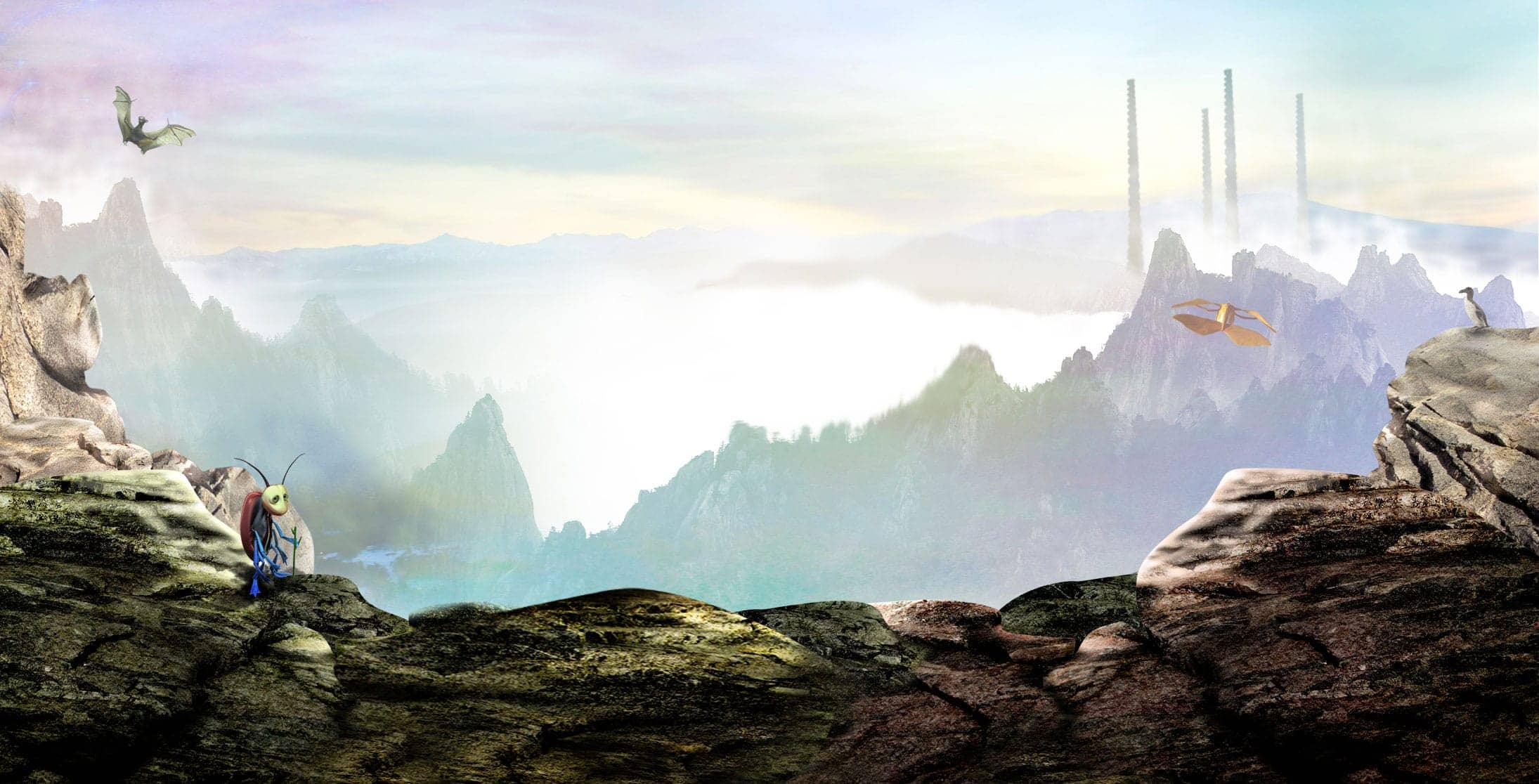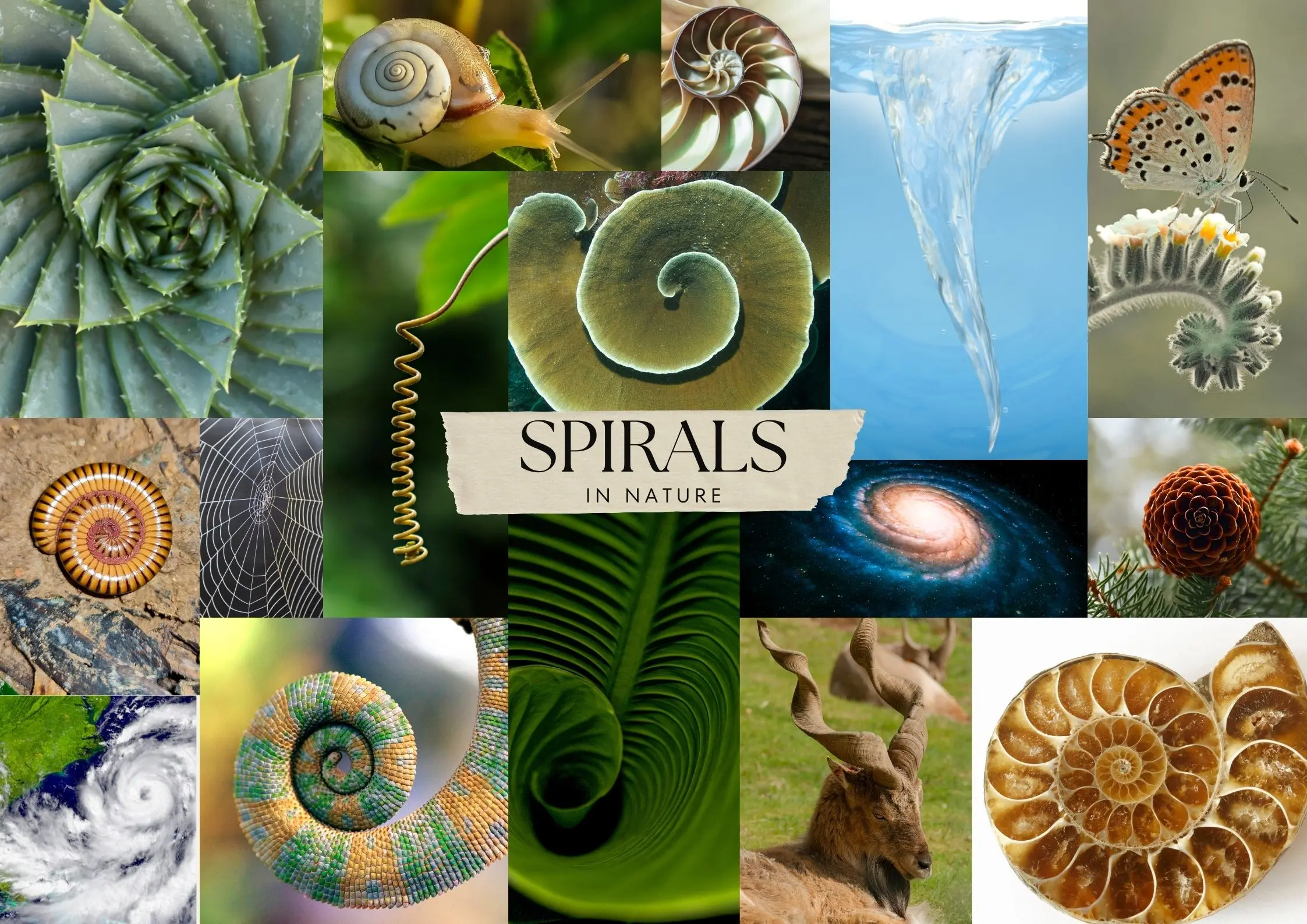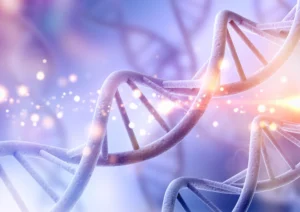Spirals are everywhere in the natural world. From the tiniest snail shell to the sweep of galaxies, they appear again and again as one of nature’s most elegant patterns. But why are they so important, and what do they mean? Let’s explore the fascinating world of spirals — and why we chose a spiral shape for Infinity Island in Lost on Infinity.
What are examples of spirals in nature?
Take a closer look at the world around you and spirals reveal themselves everywhere:
-
Plants and leaves: Aloe plants grow in perfect spirals, making the most of space and sunlight. Fern fronds uncurl in tight spirals called fiddleheads.
-
Animals: Snail shells, antelope horns, and even the curled tails of chameleons follow spirals. Millipedes coil tightly when threatened, and spiders spin spiral webs.
-
Insects and flowers: Pinecones and sunflower seeds grow in overlapping spirals, packing the maximum number of seeds into the smallest space.
-
Water and air: Spirals appear in whirlpools and tornadoes. Hurricanes photographed from space reveal the same swirling pattern.
-
The universe itself: Galaxies, including our Milky Way, are shaped by vast spiral arms of stars. Fossils of ammonites preserve ancient spirals, echoing this design across millions of years.
What is the Fibonacci sequence and why does it matter?
The Fibonacci sequence is a series of numbers where each is the sum of the two before it: 1, 1, 2, 3, 5, 8, 13, 21, and so on. This pattern was introduced to Western mathematics by the Italian mathematician Leonardo of Pisa — better known as Fibonacci — in the 13th century.
When these numbers are turned into squares and arranged side by side, they create the golden spiral. This curve has a ratio of approximately 1.618 to 1 — the famous “golden ratio.” Nature uses this sequence to organise growth efficiently: sunflower seeds, pinecones, and even galaxies show this pattern. It ensures balance, strength, and the best use of space and energy.
Do spirals have a spiritual meaning?
Across cultures, spirals have symbolised growth, journey, and eternity. Ancient carvings often use spirals to represent the cycle of life, rebirth, and the link between earth and cosmos. Because spirals can continue forever, they are also associated with infinity.
That symbolism inspired our own creation: the Island of Infinity in our story Lost on Infinity. The island is shaped as a spiral, representing both endlessness and the journey back through time. For us, spirals were the perfect way to tell the story of how every species — even extinct ones — still has a place.
Spirals in architecture and design
Humans have also been inspired by spirals in their buildings and inventions. From the swirling stone staircases of medieval castles to modern skyscrapers shaped by curves, spiral forms are both beautiful and efficient.
Spiral staircases, for example, echo natural growth patterns while saving space in tall buildings. The famous double helix staircase in the Vatican Museums and the swirling form of the Guggenheim Museum in New York are examples of spiral design in architecture. These structures are not only practical but also reflect our deep, almost subconscious attraction to nature’s patterns.
 Spirals in our own bodies
Spirals in our own bodies
Spirals aren’t just out in the world — they’re inside us too. The most famous example is DNA, the blueprint of life. DNA forms a double helix, a spiral staircase of genetic information that determines how every living thing develops.
It’s remarkable that the same pattern linking galaxies and seashells also builds the code of life itself. The spiral in DNA shows just how deeply this shape is woven into the story of the universe.
Spirals and biomimicry: learning from nature’s designs
Spirals don’t just inspire art and buildings — they solve real-world problems too. Engineers use biomimicry to copy natural designs, including spirals, to create new technologies.
Take sunflowers. Their seeds are arranged in a Fibonacci spiral to capture the most sunlight with the least overlap. Researchers recently used this same pattern to improve water-harvesting devices. By arranging special beads in sunflower-style spirals, each bead received full sunlight, boosting efficiency. Just ten square metres of these sunflower-inspired devices could collect around 24 litres of water a day using only the sun — a sustainable solution modelled directly on nature.
Another example is the Biomimicry Design Spiral. This method helps designers move step by step from understanding a problem to finding solutions inspired by natural systems. It is literally a spiral of thinking, echoing how nature evolves ideas through repetition, testing, and refinement.
Why is Infinity Island a spiral in Lost on Infinity?
In Lost on Infinity, Moog and Rockford travel to the Island of Infinity which is home to the last one of every extinct creature. On Infinity, the further you travel into the spiral, the further back in time you go. At its centre stands the Fossil Record Office, four great towers holding the imprints of lost species such as wings, leaves, pawprints, preserved in stone as you ascend through history.
The spiral design reflects the Geological Time Spiral, the scientific model showing how life has evolved over billions of years. Just like nature’s spirals, Infinity captures the balance of beauty, history, and eternity.
What do spirals teach us?
Spirals remind us that everything is connected — from the curl of a fern leaf to the swirl of the stars, the staircases we climb, and even the DNA inside our cells. They bridge science and art, mathematics and spirit. And for us, they became the perfect way to tell the story of Infinity.
🌿🍃🌼🌿🍃🌼🌿🍃🌼🌿🍃🌼🌿🍃🌼🌿🍃🌼🌿🍃🌼🌿🍃🌼🌿🍃
Discover more through story and song
At Rockford’s Rock Opera, we believe nature’s resilience can inspire both science and imagination. Our story Lost on Infinity explores extinction, biomimicry, and the secrets of the natural world through an unforgettable musical adventure.
Explore our world today:
Get the Lost on Infinity illustrated book with free musical audiobook – a totally immersive experience.
Listen to the first part of the Lost on Infinity audiobook and watch the animated adventure free on Apple App Store and Google Play.
Download our FREE lesson plans and slides about Extinction and Biomimicry. We also have a selection of classroom activities on our website.
For even more exploration of the natural world, tune in to our Stories, Science & Secrets podcast for kids. Join Matthew, Elaine, Steve Punt and special guests, as we delve into the fascinating world of biomimicry and the inspiring ways science learns from nature’s genius.
The coconut reminds us: resilience is a natural design. Biomimicry (learning from nature) is a fascinating classroom topic. You can read more about biomimicry and see all the discoveries we have documented in our Creatures’ Secrets Database.



